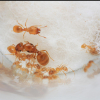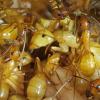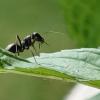I’ve only ever seen one. I caught it during a large tetramorium nuptial flight and thought nothing of it. I later learned just how cool they were and regretted it soooo much when I had released it!I’ve never seen a Pheidole ant in my life. Period.
If we’re talkin’ workers though, I’ve found 2 colonies as of all my years in ant keeping.
Edited by CatsnAnts, June 10 2019 - 7:55 PM.


















